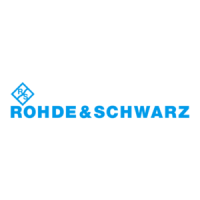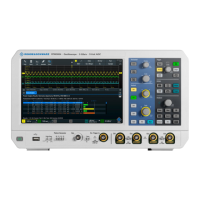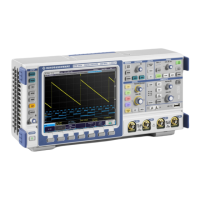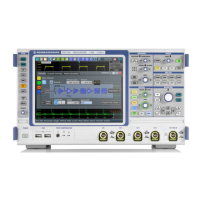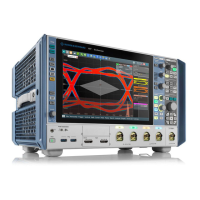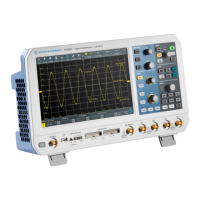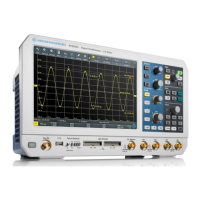Power analysis (option R&S RTM-K31)
R&S
®
RTM3000
356User Manual 1335.9090.02 ─ 09
To adjust the probes, open the "Probe" menu. For details, see Chapter 14.1.2, "Probe
settings for power measurements", on page 344.
The settings for the voltage and current sources are the same as for quality analysis,
see "Voltage" on page 350 and "Current" on page 350.
Standard
Selects the standard for pre-compliance testing.
"EN 61000-3-2 Class A"
Balanced 3-phase equipment, household appliances (excluding
equipment identified as class D), tools (excluding portable tools), dim-
mers for incandescent lamps, audio equipment
"EN 61000-3-2 Class B"
Portable tools, not professional arc welding equipment
"EN 61000-3-2 Class C"
Lighting equipment
"EN 61000-3-2 Class D"
PC, PC monitors, radio, or TV receivers with an input power less than
or equal to 600W
"MIL-STD-1399"
Military shipboard user equipment
"RTCA DO-160"
Environmental tests of avionics hardware
Remote command:
POWer:HARMonics:STANdard on page 728
Fundamental
Selects the frequency of the input signal. If "Automatic" is set, the instrument analyses
the signal and sets the fundamental frequency accordingly. Available values depend on
the selected "Standard".
Remote command:
POWer:HARMonics:DOFRequency on page 724
POWer:HARMonics:ENFRequency on page 724
POWer:HARMonics:MIFRequency on page 726
Export
"Export" opens the export menu to save the measurement results. You can set the tar-
get directory, file name, and a comment. The file format is CSV.
Remote command:
EXPort:POWer:NAME on page 729
EXPort:POWer:SAVE on page 729
14.4.4 Inrush current
The inrush current analysis measures the peak of the input current that is drawn by the
device, when the device is turned on.
Input power measurements
